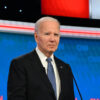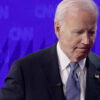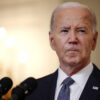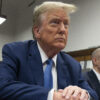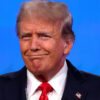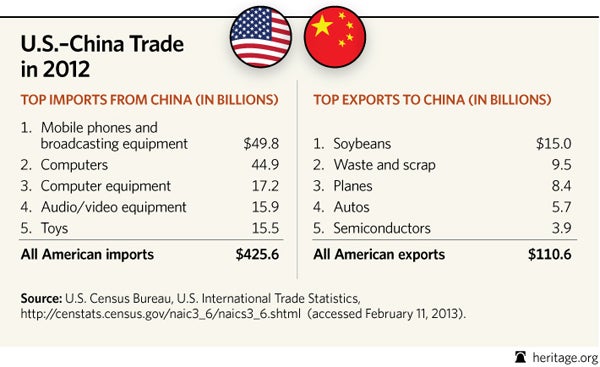The numbers for America’s trade in 2012 came out on Friday and, as usual, China is prominent.
America’s goods trade deficit with China broke the $300 billion barrier, rising almost 7 percent from 2011 to $315 billion. Also, China was said to have passed the U.S. as the largest trading country for goods: $3.87 trillion to $3.82 trillion. But the numbers aren’t right, and they don’t mean what some people think they mean.
We don’t count trade properly. If part of something is made in the U.S., another part is made in Japan, and another part is made in Taiwan, those countries get credit for exporting their parts. If the parts are just assembled in China and then exported, China gets credit for exporting the whole product, even though no parts were made there.
This matters to U.S.–China trade—especially in the top categories of American imports: cell phones, computers, and so on. Most of the value of these products comes from outside China, including from the U.S. Yet the whole phone or computer is counted as a Chinese export to the U.S. This doesn’t make sense.
When the Organization for Economic Cooperation and Development applied this idea to trade numbers from 2009, it found that the U.S.–China trade deficit shrank 25 percent. A good guess is that the true 2012 trade deficit in goods is closer to $200 billion than $300 billion.
The same logic shrinks China’s exports to most other countries. A very rough guess has China’s exports overstated by about $400 billion because of the way the world counts trade, leaving the U.S. as still the world’s largest trading country.
If we use the correct numbers, is the trade deficit important? Not really. Is being the top global trader important? Possibly.
A “trade deficit” sounds like we don’t have enough trade. In fact, we now have over half a trillion dollars in trade with China, a huge positive force in our bilateral relations and around the world. Meanwhile, being the top global trader is tied to something important: competition. Trade driven by subsidies and waste has little benefit to the trading country; trade driven by competition brings immense benefits.
The mistake that will be made concerning Friday’s numbers is believing that exports are good and imports are bad, that we’re losing to China because we don’t export enough and we import too much. It’s true that we don’t export enough—market barriers overseas limit American exports and we should seek to bring them down—but we certainly don’t import too much: There are imports, from China and anywhere else, only because we freely choose to buy them every day. We buy them because they make our lives better. And this is bad?
The usual response is that imports cost jobs. Actually, they create them. From port or airport off-loading to transport within the country to storage to sales to after-market activities, imports support millions of American jobs. In 2010, imports of Chinese toys alone helped support 221,000 jobs.
We could ban toy imports and gain jobs making the toys here. But the number of jobs created would be small, because prices would rise and fewer parents would be able to afford toys for their kids. Or we could all pay taxes to toy makers here—actually, pay money so we can’t buy the things we want. Insanity. Remarkably, that’s basically what China does with its subsidies.
Until China changes or we change, the U.S. will be the trade leader. Trade is not about deficits and surpluses; it’s about competition. Being open to competition brings prosperity at home and keeps the world at your door.
